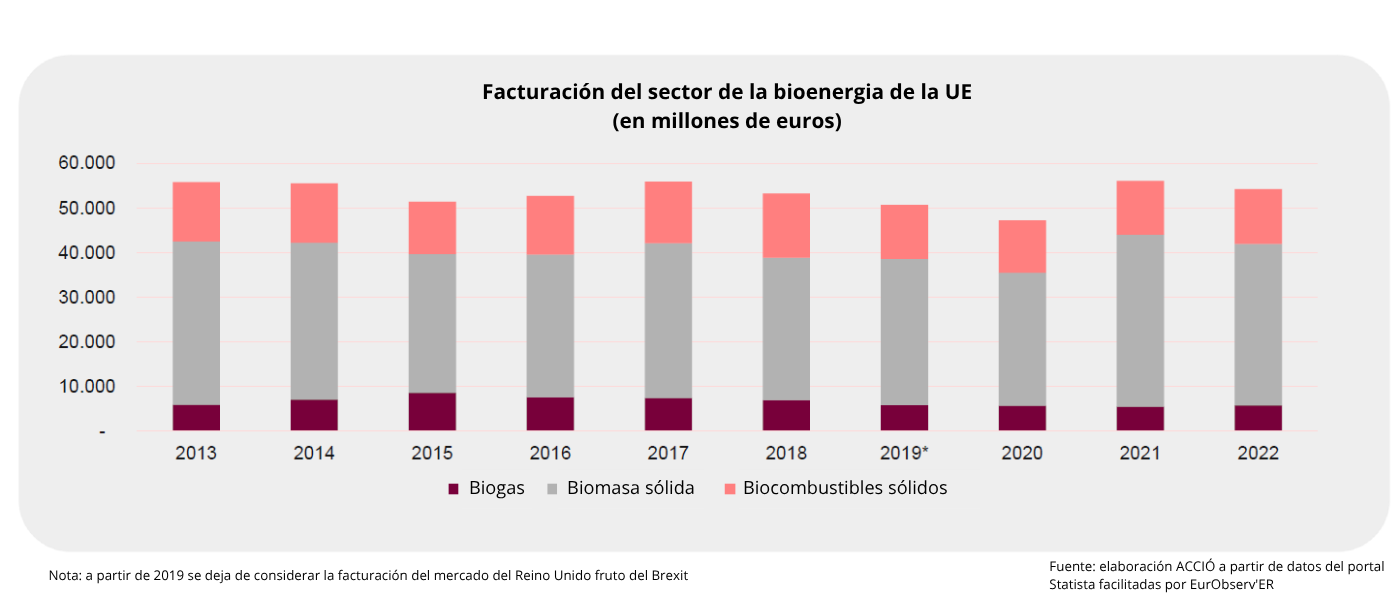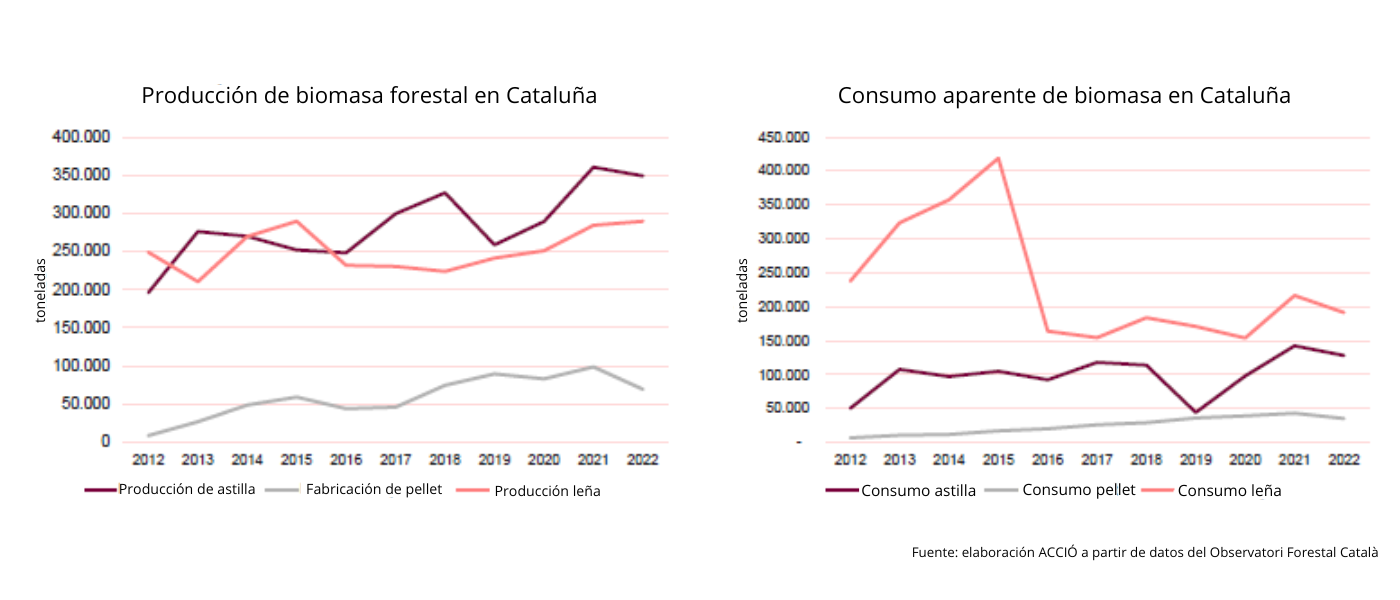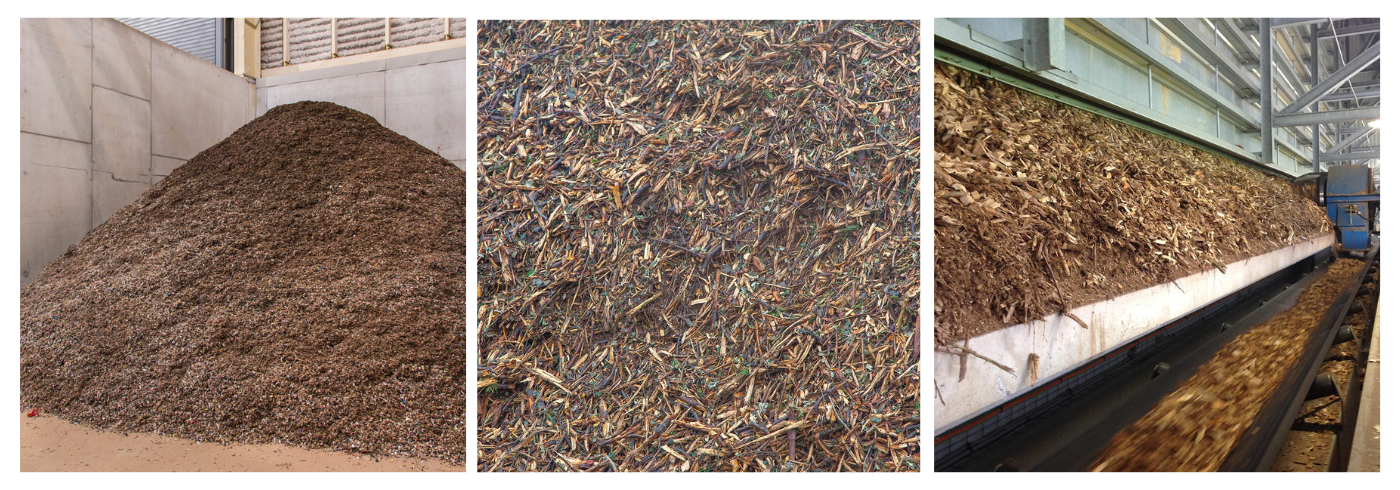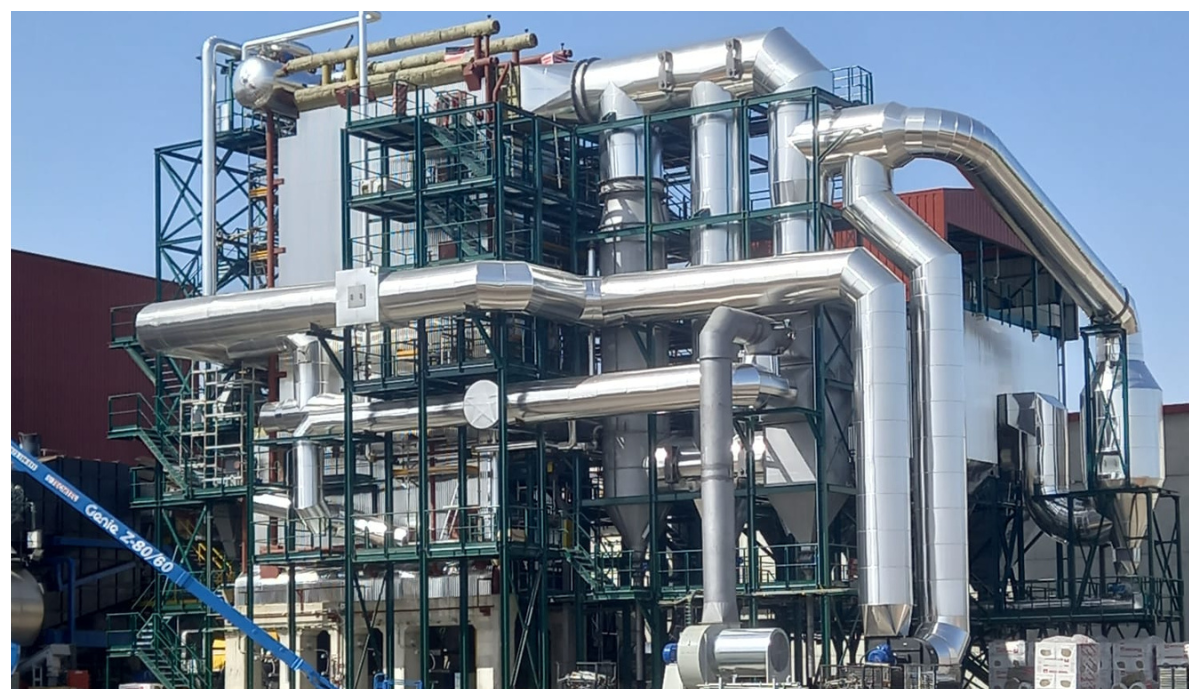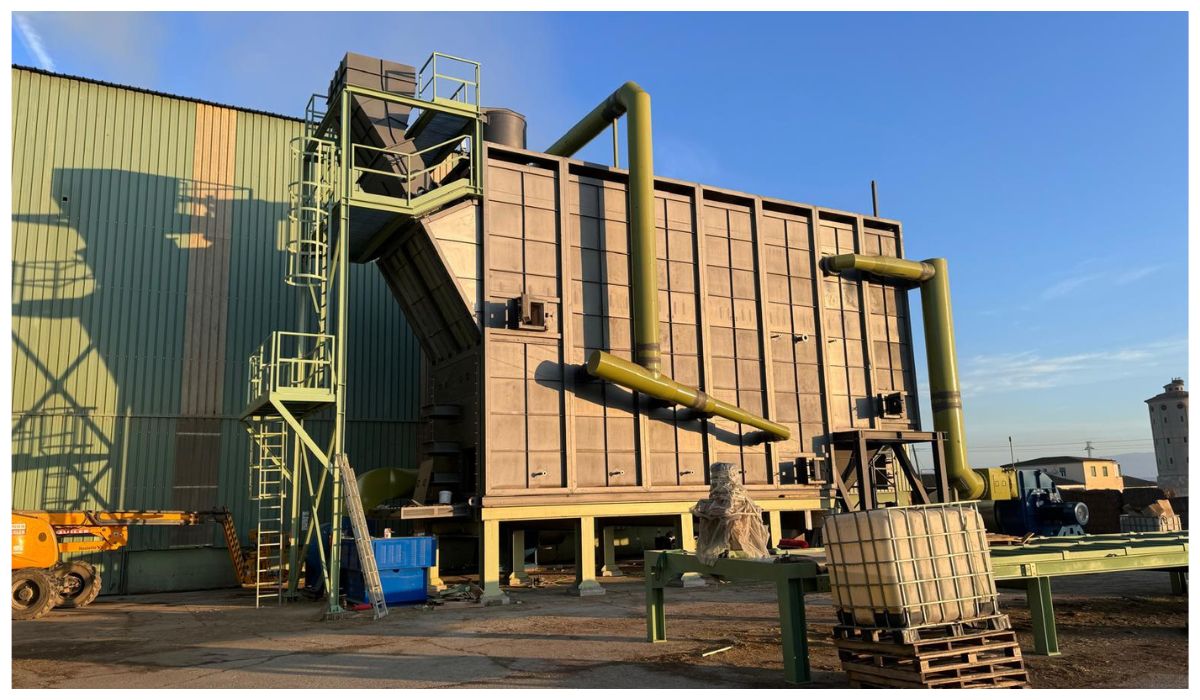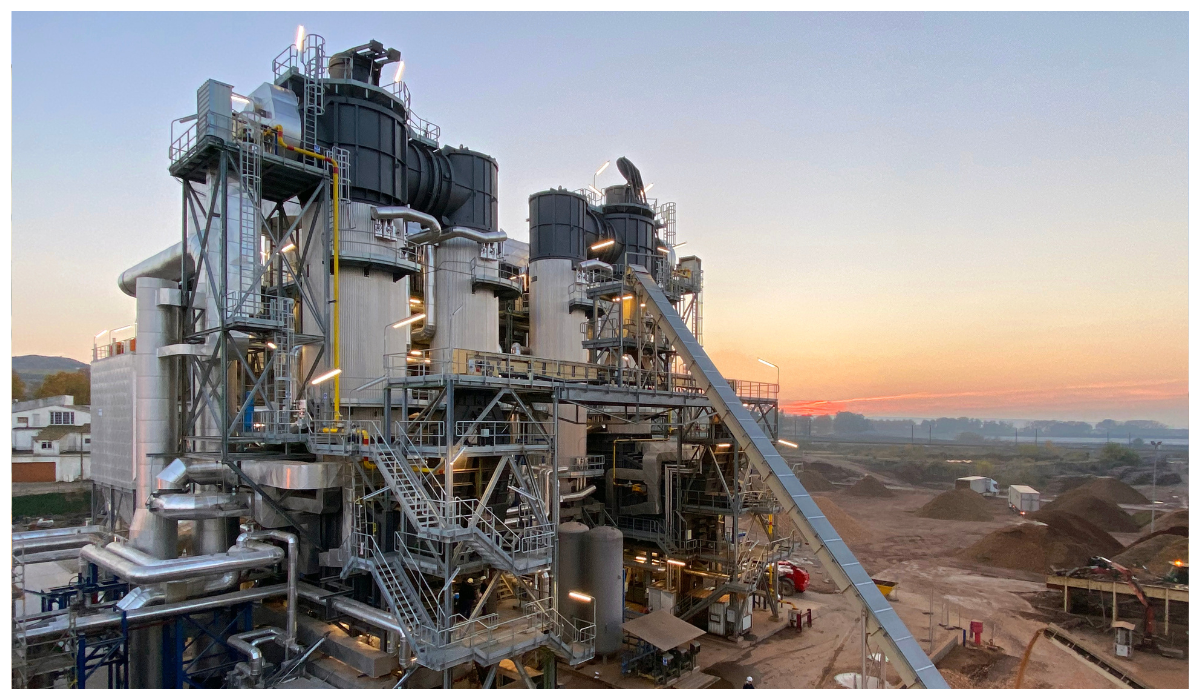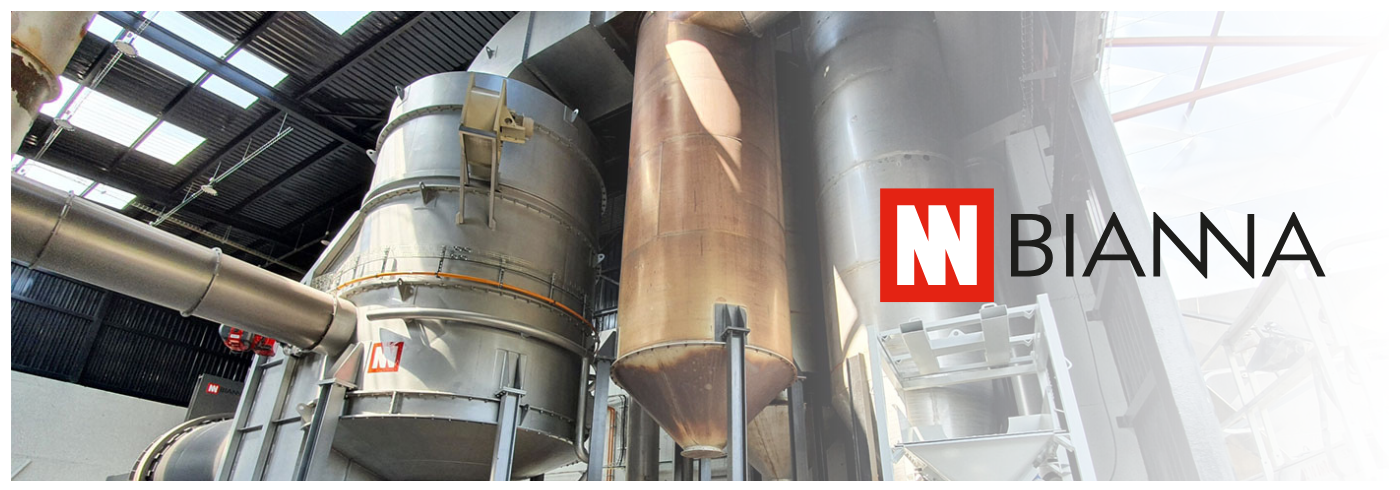In a context marked by the sustained increase in energy demand and the urgency of reducing waste that ends up in landfills, bioenergy is consolidating as one of the most strategic alternatives for moving towards a circular, low-carbon economy.
A horizon driven by the energy transition
The global decarbonisation process has put the focus on renewable energies capable of offering not only sustainability, but also stability and flexibility. In this context, bioenergy stands out as one of the few truly manageable and storable renewable sources, capable of generating sustainable electricity, heat and fuels from biological resources.
This is confirmed by ACCIÓ’s sectoral report (June 2025), which places Catalonia as one of the regions with the greatest potential for development in this field thanks to its abundance of biogenic resources and an increasingly specialised business fabric.
The report identifies significant growth in the sector, with 365 companies, a turnover of 872 million euros and more than 2,600 jobs by 2023, as well as clear leadership in solid biomass and accelerated development of biogas and biomethane. It also highlights key trends such as the emergence of new technologies (pyrogasification, hydrothermal gasification, methanisation), diversification of business models and convergence with emerging applications such as green hydrogen and sustainable aviation fuels (SAF).
In addition, the international benchmarking included in the report highlights European initiatives such as Bioeconomy for Change (France) and highlights the importance of decentralised territorial models, participation of the primary sector, technological innovation and strategies to achieve greater social acceptance. Catalonia has a strategic opportunity to consolidate itself as a bioenergy hub on a European scale, and Bianna is positioned as a key player to realise this potential.
In this scenario, the energy recovery of organic matter and solid waste is key to comply with the European Green Pact and the RED III Directive.
What types of bioenergy are there?
Within the wide range of bioenergy sources, there are two main ones:
- Solid biomass: these are materials such as forestry and agricultural waste, urban pruning or by-products from the food industry. Its thermal and electrical use is carried out through industrial boilers or cogeneration systems.
- Biogas and biomethane: generated from organic waste (slurry, food waste, sewage sludge), these renewable gases can generate electricity, heat or be injected into the natural gas network after a purification process.
Both types are in full development in Catalonia, with solid biomass already consolidated and biogas growing rapidly thanks to the potential of raw materials and the existing gas infrastructure.
Technology and Solutions for Solid Bioenergy
At Bianna, after the integration of Sugimat, a company specialised in industrial boilers, we are working resolutely for the valorisation of solid biomass, one of the most robust and mature pillars of the European bioenergy ecosystem. Through our technological solutions and accumulated experience, we offer turnkey projects adapted to multiple sectors and industries. In order to articulate this line of work, we do so through the following technologies:
- Waste treatment plants that allow us to produce quality solid biomass from different sources.
- Industrial boilers designed and manufactured by Bianna Sugimat for high efficiency thermal and electrical generation.
- Advanced pyrolysis and gasification systems.
A differential proposal: beyond wood
While many market players focus their activity on forest-based biomass, at Bianna we expand our capacity to process a wide variety of solid waste, not only from forestry operations: Dust, MDF, Pine bark, Poplar, Wood chips, Wood shavings, Pruning waste, Cotton waste, Rice husks, Wood pellets, Straw, Pomace, Olive pits,
This versatility allows energy solutions to be adapted to the local availability of resources, optimising both logistics and profitability.
Furthermore, thanks to Sugimat’s integration in Bianna, with its extensive experience in the market, we offer tailor-made cogeneration solutions, combining electricity and heat from solid biomass. These installations allow for superior energy efficiency and are ideal for industries with high thermal demand or for district heat networks.
Reference projects
Our technology is already present in strategic projects in Catalonia, providing tangible solutions to the energy challenge:
Nufri (Mollerussa)
BIANNA supplied two saturated steam boilers fuelled by woody biomass, generating 20 and 30 tonnes per hour. They use biomass from various sources, including the pruning of Nufri’s own crops, which closes a virtuous cycle. The steam generated is used in their industrial process, thus optimising energy use and reducing dependence on fossil fuels.
Aldhara (Ivars d’Urgell)
BIANNA supplied a polyfuel combustion gas generation chamber. This equipment allows the drying of various crops such as fodder, such as alfalfa and corn silage. Its ‘polyfuel’ characteristic is key, as it allows it to work with different types of biomasses such as agro-industrial and woody residues, providing Aldahara with the necessary independence to completely dispense with natural gas in its drying process, which translates into significant economic and environmental benefits.
Termosolar Borges (Les Borges Blanques)
This pioneering project combines the generation of electricity through solar concentration with the combustion of forest biomass. This biomass comes from local forest maintenance and pruning, ensuring a sustainable source. At the heart of this integration are high-temperature biomass thermal oil boilers, designed to provide energy efficiently and continuously. This combination allows electricity production to be maintained even when the solar resource is not available, maximising the hours of renewable production.
Common technological configuration
These cases share a solid technological base:
- Mechanical pre-treatment of waste.
- Latest generation biomass boilers.
- Possibility of installing a CO2 capture system (Carbon capture ready) that would allow negative carbon emissions and its use in e-fuels, SAF and e-methanol when combined with the production of green hydrogen.
A Catalan model with peninsular and European projection
The successes achieved in Catalonia are not anecdotal: they can and should be replicated in other regions of Spain and the continent. The keys to the model – diversity of waste, technological efficiency, economic viability – are perfectly exportable to areas with a strong agro-industrial, forestry or livestock farming presence.
Our international vocation when working with partners in other countries, who seek to adapt our solutions to their own territories, contributes to the expansion of a more intelligent, decentralised and sustainable bioenergy.
Bioenergy is no longer a promise but a tangible reality.
At Bianna, we remain committed to solutions that combine technology, sustainability and profitability, convinced that today’s waste is tomorrow’s clean energy.

